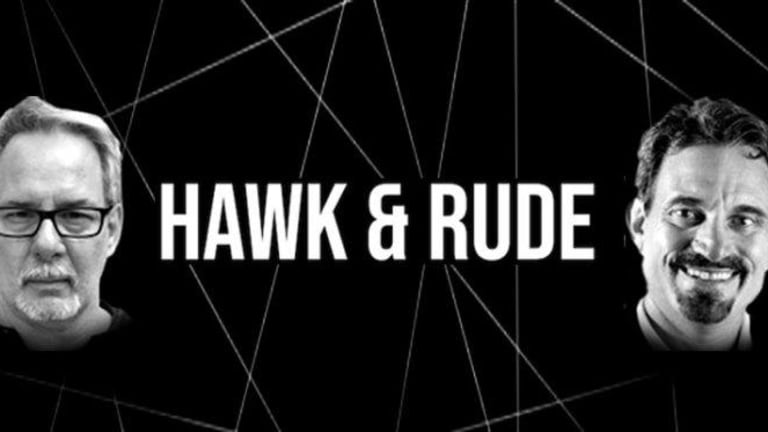
Those are the breaks: Best and worst rulings on pro golf tours

Longtime golf journalists John Hawkins and Jeff Rude are co-hosts of a weekly podcast, Hawk & Rude, in which they discuss and debate the hottest issues in golf. They also share their takes in this weekly installment.
What are the most favorable and unfavorable on-course rulings you’ve encountered while covering professional golf?
Hawk’s take: Since the Tour has been known to play Santa Claus on requests for obstructed-view drops and other forms of free relief, I confined my list to the majors, where such decisions supposedly are made without bias. Besides, the majors actually matter, so let’s head back to the final round of the 2000 Masters. Vijay Singh led David Duval by two shots with eight holes to play but yanked his second shot into the water. The ball clearly made no contact with land on the opposite side of the hazard before submerging, yet Singh was allowed to play his fourth shot from the fringe and salvage a routine bogey.
If he’d been sent back to the drop area, which is why those things exist, Singh would have done well to make a 6, and it’s a very different ballgame. Duval would finish four behind the Fijian, so if you really want to burn his biscuits, ask him about that Sunday at Augusta National. Or you could mention the sadistic verdict he received from USGA officials a year later, when his final tee shot in the third round at Southern Hills came to rest on a gallery crosswalk masquerading as a 40-yard mud pit.
Literally and figuratively, that U.S. Open was a mess. Duval was denied relief from the strip of muck and 6-inch footprints, leaving one of the game’s most composed players very hot and bothered en route to the scoring area. Play it as it lies, fellas. We’ll take care of the rest.

American David Duval has endured some of the best and worst in golf rulings over the years.
(© GOLFFILE / DAVID LLOYD / 2016 FILE)
Rude’s take: Colin Montgomerie received arguably the most favorable ruling, an unfortunate one that caused an international stir, at the 2005 Indonesian Open. He struggled to take an awkward stance by a greenside bunker and left the ball there upon a weather stoppage. When the ball wasn’t there the next day, Montgomerie estimated poorly, played from a different place and a good stance, several inches away, and chipped close to the hole.
A tournament referee cleared him of a rules breach. But, because of clear video evidence, Monty was later rebuked by the European Tour, apologized and donated his prize money to charity.
As for the most unfavorable – and there have been thousands of such instances – that happens when someone drives the ball down the middle, only to find a sand-filled divot, which in the real world is ground under repair. If you’re not going to allow a free drop from that, you might as well put serpents in the center of the fairway.
Actually, the worst I recall came at the 2003 British Open, when England’s Mark Roe shot 67 in the third round, putting him three shots off the lead. But he was disqualified because he and playing competitor Jesper Parnevik had not exchanged cards and thus signed for wrong scores.
Roe’s score was attested by Parnevik, a referee, a walking scorer and everybody watching. But the truth, which should be the ultimate referee, didn’t matter; sadly, a clerical error did.